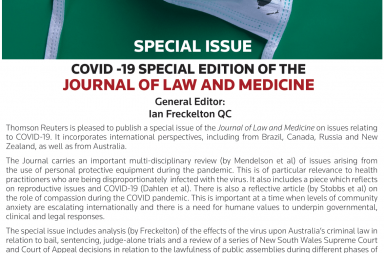Australia’s first scholarly article on digitally altered images, body image, and the law appears in the June Part of the Journal of Law and Medicine.
Israeli legislation popularly known as “Photoshop Law” came into effect on 1 January 2013. Photoshop Law is the first ever law of its kind; it requires that all models used in advertisements or other media have a body mass index higher than 18.5. Where images are digitally altered (or “Photoshopped”) to make models appear thinner than they are in real life, the published images must clearly state that they’re altered, as well as the reasons why they were altered. Furthermore, this disclaimer must take up at least 7% of the total area of the image.
The purpose of the Photoshop Law is to mitigate any negative effects on self esteem and body image that may be caused by exposure to depictions of models as extremely thin, and to curtail the development of eating disorders in Israel.
In her article “Beauty is only photoshop deep: Legislating models’ BMIs and photoshopping images” (2014)Â 21 JLM 859, Marilyn Krawitz argues that Australia should follow Israel’s lead, and pass a similar law. In doing so, Krawitz considers the success of the 2009 Australian Government’s National Advisory Group on Body Image, and its implementation of a voluntary Code of Conduct on Body Image.
Subscribers can read the full article on Westlaw AU, while non-subscribers can purchase single articles here.
Should Australia follow Israel’s lead by legislating about body image? Or is a voluntary industry code still the way to go? Let us know what you think on Twitter @JournalsTalk, or below in the comments.


